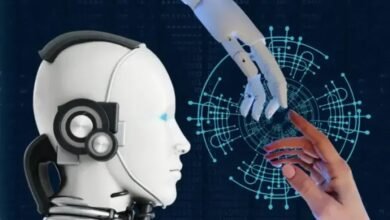Biotechnology: a journey into the future of innovation
The most notable aspect of biotechnology is the production of genetically modified therapeutic proteins and other drugs by genetic engineering. Over the past 10,000 years, humans have harnessed vital processes to improve their quality of life, beginning with the first agricultural societies. About 6,000 years ago, humans began exploiting the vital processes of microorganisms to make bread, alcoholic beverages, and cheese to preserve dairy products. However, these processes are not intended for what is known today as biotechnology.
The term was first applied broadly to the molecular and cellular technologies that began to emerge in the 1960s and 1970s. The nascent biotech industry began to merge between the mid-to-late seventies of the last century, led by Genentech.
It is a pharmaceutical company established in 1976 by Robert A. Swanson (Robert A. Swanson), and Herbert W. Boyer to showcase and commercialize recombinant DNA technology pioneered by Boyer, Paul Berg, and Stanley N. Cohen. Early companies such as Genentech, Amgen, Biogen, Cetus, and Genex began manufacturing genetically engineered materials primarily for medical and environmental uses.
For more than a decade, recombinant DNA (or genetic engineering) technology has dominated the biotechnology industry. This technique consists of separating the gene to extract a useful protein (mostly a human protein) from producer cells—such as yeasts, bacteria, or mammalian cells in culture—which subsequently produce the protein in bulk. During the process of separating a gene into a producing cell, a new organism is created.
Biotechnology snd Researchers
At first, biotech investors and researchers feared that courts would not allow them to obtain patents on living organisms; Newly discovered organisms recognized in nature were not allowed to be patented.
But in 1980, the US Supreme Court ruled that “man-made microorganisms are patentable”. This ruling led to the emergence of a wave of biotech companies and the first investment explosion in the fledgling industry.
In 1982, recombinant insulin became the first genetically modified product to receive FDA approval. Since then, dozens of genetically modified protein drugs have been marketed worldwide, including recombinant versions of growth hormone, clotting factors, proteins that mimic red and white blood cell production, interferon, and anticoagulants.
In the early years, the primary goal of biotechnology was the ability to naturally produce therapeutic molecules in larger quantities than those extracted from traditional sources such as plasma, animal organs, and human cadavers. Recombinant proteins are also less contaminated with pathogens or allergens.
Today’s biotechnology researchers strive to discover the molecular root causes of disease and to intervene at the same level. Sometimes this means producing therapeutic proteins to meet the body’s needs or to make up for a deficiency caused by a genetic defect, such as first-generation biotechnology drugs, for example.
The expansion of the biotechnology industry
However, the biotechnology industry has expanded to include the development of conventional treatments and monoclonal antibodies that stop the progression of the disease. Similar steps were discovered by the painstaking study of genes (genomics), the proteins encoded in them (proteomics), and their broader vital ways of interaction.
In addition to the aforementioned tools, biotechnology is involved in the integration of biological information and computer technology, bioinformatics, by studying the use of microscopic equipment that enters the human body, nanotechnology, and may apply techniques in stem cell research and cloning to replace cells and dead or defective tissue (regenerative medicine).
Companies and academic laboratories are integrating different and disparate techniques for analysis downstream of molecules, and synthesis upwards from molecular biology to chemical pathways, tissues, and organs.
In addition to its use in health, biotechnology has proven useful in industrial refining processes through the discovery and production of vital enzymes that catalyze chemical reactions; This enhances the protection of the environment, through the action of enzymes that convert pollutants into harmless substances; and in agricultural production through genetic engineering.
Among the applications of biotechnology, agricultural applications have been the most controversial. Some activists and consumer groups have called for outlaws (genetically modified organisms or GMOs) or for laws requiring food labels to show consumers the presence of genetically modified substances in food.
Production of modified organisms
GMO production in the United States began in agriculture in 1993 when the US Food and Drug Administration allowed the use of bovine somatotropin (“BST”), a growth hormone that increases milk production in cows. The following year, the agency approved the first genetically modified whole food, tomatoes modified to last longer after being picked (that is, they can be stored for extended periods).
Since then, many GMOs have been released in the USA, Europe, and other regions, including fruits that produce anti-insects on their own and fruits that can live with toxins that are used to kill weeds.
Studies by the United Nations, the US National Academy of Sciences, the European Union, the American Medical Association, US regulatory agencies, and other organizations have found GMOs to be safe, but the controversy is that it is still too early to judge the long-term health effects and impact of this fruit. environmental.
In the late twentieth century and the beginning of the twenty-first century, the land planted with genetically modified fruits increased dramatically, from 1.7 million hectares (4.7 million acres) in 1996 to 160 million hectares (395 million acres) in 2011.
Overall, the biotechnology industry’s income nearly doubled in the United States and Europe in the five years from 1996 to 2000. Growth continued rapidly into the 21st century, fueled by the introduction of new findings, especially in the field of health care.
Conclusion:
At the conclusion of this article, we realize that biotechnology represents an essential part of the path of modern technological development, as it provides an innovative and advanced solution to many challenges facing humans in different fields. They contribute to the development of medicines and medical treatments, the cultivation of improved and pest-resistant agricultural crops, the production of clean energy, and many other applications that benefit humanity in general.
However, we must be careful in using these new technologies, and keep in mind potential side effects, and environmental and ethical impacts. We must be wise and moderate in applying this technology, ensuring that it is for the common good and sustainable development.
Ultimately, biotechnology remains an ongoing and controversial challenge, but when used correctly and responsibly, these technologies can be a pivotal factor in building a better, more sustainable future for humanity and the environment.





